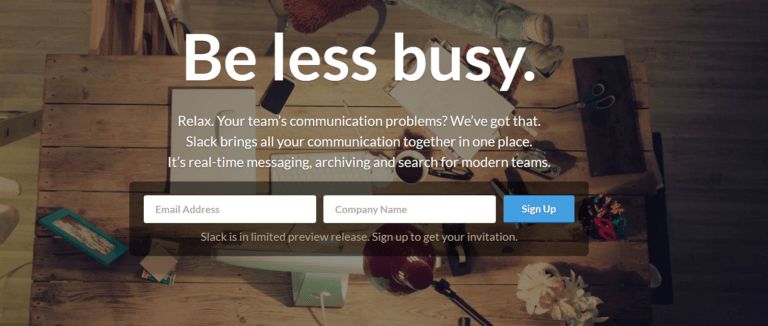If you position yourself as ‘known’ before ‘trusted’, your marketing will fail.
We’ve seen this backwards approach kill more promising startups than bad products ever could. Reid Hoffman’s first startup, Socialnet, failed despite having a great product idea, and he had to return investors’ capital, not because the idea was wrong but because nobody trusted an unknown founder with their problems.
However, the truth is that trust comes first, and recognition follows.
Here’s what we’ve learned after studying dozens of unknown-to-trusted brand transformations: positioning for trust before fame isn’t just smarter – it’s the only way for resource-constrained startups.
What Trust-First Brand Positioning Means for Unknown Brands
Trust-first positioning means prioritising being recognised as trustworthy or credible before launching awareness campaigns.
It’s about understanding that prospects evaluate your brand trustworthiness and credibility in 7 seconds, and unknown brands lose that evaluation unless they’ve built specific trust mechanisms.
4 Credibility Signals That Build Brand Trust Fast
1. Credibility Signals: What makes prospects think “these people know what they’re doing”
2. Authority Markers: Evidence that you understand their specific problems better than competitors
3. Social Proof Systems: Third-party validation mechanisms that convert sceptics
4. Risk Reversal: Reducing the risk of choosing you over established alternatives
Why Trust-Based Marketing Is the New Default for Early-Stage Brands
Our current digital world has changed trust requirements.
More than finances, more than product, and more than market position, talent is the most important differentiator, according to LinkedIn co-founder Reid Hoffman. But talent without trust signals is invisible to your target market.
Google’s E-E-A-T algorithm changes (Experience, Expertise, Authoritativeness, Trustworthiness) now prioritise trust indicators over traffic metrics. B2B buyers complete 57-70% of their research before engaging with sales teams, so your trust positioning has to work without human intervention.
Case Study: When Trust-First Positioning Saves a Failing Launch
We’ll show you a positioning failure that illustrates these principles.
The Trust Crisis
In 2011, Dollar Shave Club faced a near-impossible task: breaking into a market dominated by Gillette, a company with 70% market share and a billion-dollar ad budget.
Founder Michael Dubin had no industry experience, no credentials, and a product people could buy cheaper at any drugstore. Dollar Shave Club’s first promotional video got almost 5 million views in two months.
A 1 dollar razor? Most people thought it was some sort of gimmick. The video was funny and catchy, sure. But buying razors online in 2012 was strange, and most importantly, they weren’t trusted yet.
Because virality still doesn’t equal trust.
The Research
In this case, Dubin’s team uncovered more trust gaps instead of awareness gaps:
- Credibility gap: An unknown founder in a long-established industry
- Authority gap: No expertise in men’s grooming
- Social proof gap: Absence of testimonials or partnerships from recognised customers or organisations
- Risk gap: appeared too risky for a subscription model on commodity products
The Trust-First Repositioning
In rebuilding gaps of trust, Dollar Shave Club repositioned from “cheaper razors” around three trust-building elements:
Credibility through transparency: Customers knew exactly what they would get, their “no-strings” pricing, when, and for how much. An order confirmation email would contain a detailed list of the order, and on the website, customers could see the prices in full beforehand. Customers were satisfied with the straightforward business model, gratefully responding to the try-out advertising during the initial launch phase.
Authority through problem identification: Rather than asserting claims of superiority, the brand identifies the core reasons for the displeasure. For razor blade users, these were: overpriced cartridges, inconvenient store trips, and salesmen lurking with only one purpose in the store.
Risk reversal through guarantees: For recurring customers, Dollar Shave Club streamlined their razor subscription model but prioritized customer service and offered satisfaction guarantees.
The Results
The trust-first approach worked:
- A subscription model took over a huge chunk of the razor market, with 3.2 million subscribers
- Dollar Shave Club was sold to Unilever for about $1 billion
- They did this with minimal advertising investment
The product never changed. Only how credibility was communicated upfront.
The 4 Trust-First Positioning Criteria
- Lead with credibility
The question every unknown brand must answer: What makes prospects immediately think “these people know what they’re doing”?
Most founders lead with what they do. Trust-first positioning leads with why you’re qualified to do it.
Wrong approach: We help B2B companies generate leads through content marketing.
Trust-first approach: Former VP of XYZ at three $100M+ SaaS companies now helps pre-PMF startups avoid the content mistakes that waste 6-figure marketing budgets
What to do:
- List your credentials in the headlines, not the about pages.
- Use jargon and advertising metrics to demonstrate your knowledge.
- Reference your background.
- Place certifications in relevant conversion areas.
The difference is not in the service itself, but in demonstrating that the problems that have been solved in the past are implemented in a manner that the prospective clients regard.
- Authority Through Specificity
The specificity category explains how your prospects perceive your brand.
Too broad: “Digital marketing consultant” (sounds like you will take any client)
Too narrow: “Facebook ad optimization for pet supply stores in Austin” (restricts your market reach)
Authority sweet spot: “Performance marketing for DTC brands scaling from $1M to $10M ARR”
Authority Building Strategies:
Publish contrarian industry insights: Challenge the norm with data-driven arguments. Instead of saying “5 Content Marketing Tips,” try “Why Most SaaS Content Marketing Fails (And the Framework That Converts).”
Reference specific tools and metrics: Instead of “improved performance,” say “reduced CAC from $340 to $180 using this attribution model change”
Create memorable frameworks: Package your expertise into teachable methodologies with names (like our Trust-First Positioning Framework)
The goal isn’t to be the only expert; it’s to be the expert prospects remember when they need your specific solution.
- How Social Proof Changes A Sceptic’s Mind
Not all social proof builds trust. Without social proof, new businesses risk trust issues when working with a new client.
Trust Hierarchy (Most to Least Powerful):
- Customer outcomes with specific metrics: “Increased their qualified leads by 340% in 90 days.”
- Industry recognition (media quotes are not enough).
- Speaking at industry conferences (you’re a peer to the established experts).
- Memberships and alliances with key players in the industry.
- Social media metrics (follower count means nothing).
Implementation Strategy:
Start with relevant proof points: “We have dozens of testimonials”. Not to worry, three customer stories with concrete proof are better than 20 unspecific plaudits.
Smaller proofs increase trust: A client case study, then a podcast, capped by industry certification, beats waiting for a big announcement.
Proof to the audience: With startup founders, a testimonial from a Fortune 500 CISO means more than with enterprise buyers.
- Risk Reversal for Unknown Brands
If you’re competing with other established brands, you can do something called risk reversal to attract new clients.
Risk Reversal Tactics:
Guarantee the outcome: “If you don’t see 50% more qualified leads in 90 days, I’ll work for free until you do.”
Provide free value upfront: Offer frameworks, templates or short consultations to prove your competence before asking for a commitment.
Share your whole process: Disclose all your tools, timelines and create a detailed process for the client. Without sharing what brands do, clients don’t trust, especially unknown brands.
Reduced scope pilot projects: These give clients a test run of your work so they can see the quality of work you deliver with minimal risk.
In-depth case studies: Streamline your problem-solving so clients see working with you is easy.
Content Strategy for Trust-First Positioning
Your content marketing improves tenfold when trust-first principles are applied.
Building Authority with These Content Types:
- In-depth case studies: Share your results, but also share your thought process, obstacles, and how you solved them. This type of transparency demonstrates trust and competence.
- Contrarian insights: Share insights that larger brands cannot or will not share for political reasons. Lesser-known brands are known for taking bolder stances simply because they do not have restrictions.
- Educational frameworks: Your expertise should be distilled into systems that others can be taught. Developing a named methodology enables easy recall for your prospects.
Your brand will also benefit from trust-first content by:
- Trust-signalling content improves a brand’s performance in search algorithms.
- Content that meets user intent has a longer dwell time.
- Natural backlinks from industry peers who acknowledge your expertise.
- Detailed answers have featured snippet opportunities that can be captured.
- Brand mention opportunities that will support your efforts.
Let Us Help You Achieve Credibility
Our Digital PR Agency: You can learn more about us here.
At Detutu Media, we help brands become known by establishing authority through strategic trust-first positioning.
Get in touch with us here.




